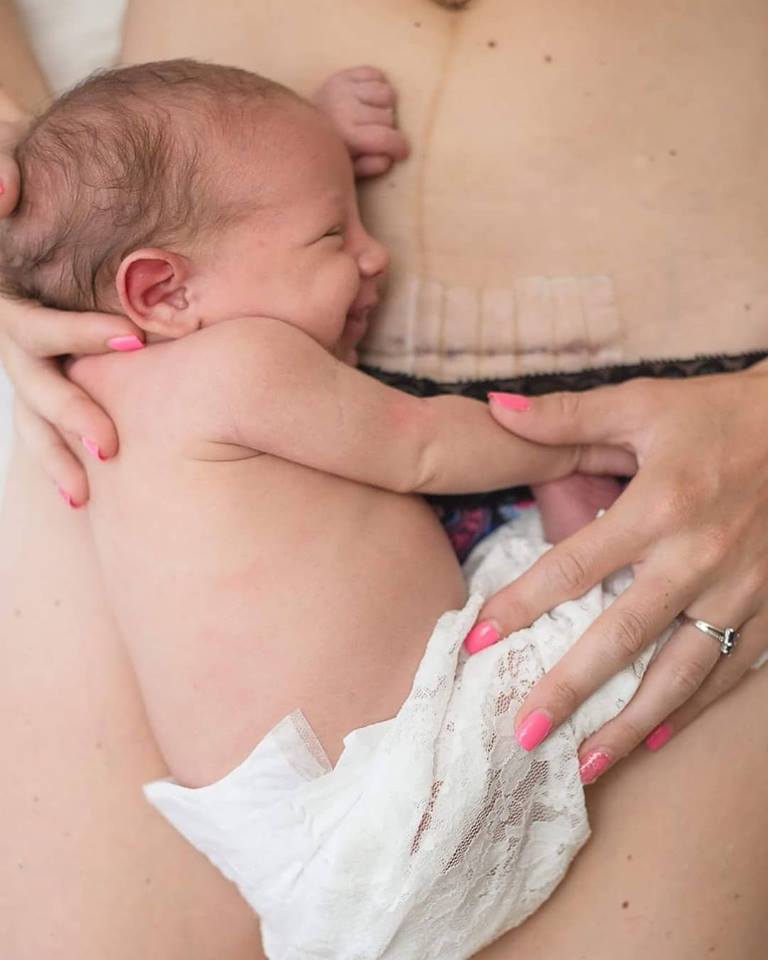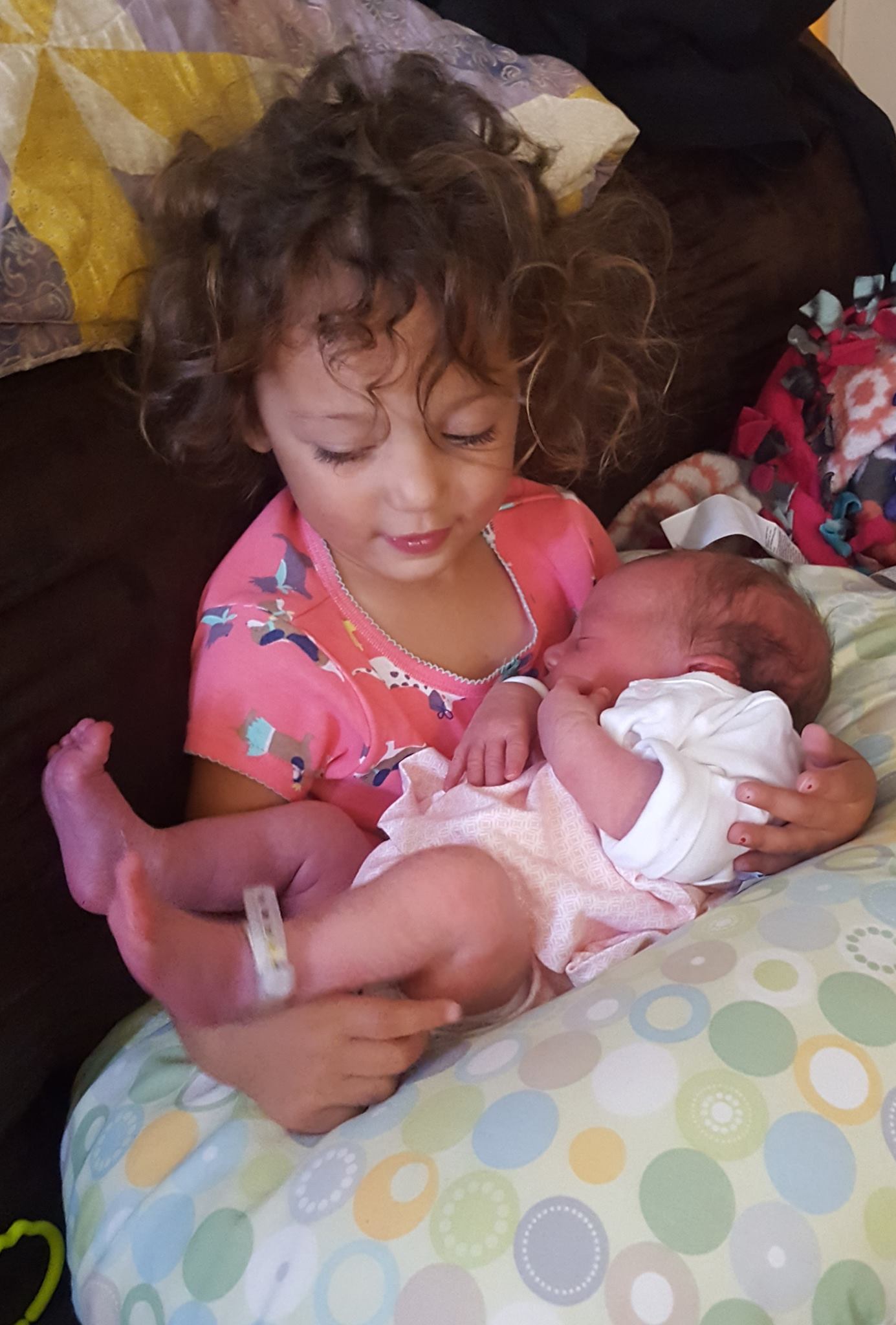If you live in SoCal, chances are you know someone with a Revolution balance board. And it’s probably someone who surfs or skateboards.
The motions you need to balance on the board are similar to those you need to balance on a skateboard or surfboard, so that makes sense. If you have never seen a Revolution Balance board, here’s what the board does:
When you try to stand on the board with the roller underneath, the roller moves back and forth.
I know the image looks like my daughter just standing on a board and not in motion, so allow me to explain. The “board” is like the deck of a skateboard, and you put the roller underneath it. When you try to stand on the board with the roller underneath, the roller moves back and forth. It takes core strength, focus, and balance (not to mention practice), to be able to keep both ends of the board off the ground.
It takes core strength, focus, and balance
Does this type of balancing sound a little too advanced for your current ability level? Don’t worry, you’re not alone! It took me several attempts and a lot of hand holding before I was able to balance on my own. This was using my neighbor’s 101 Balance Board that comes with the board and roller, but there’s an easier way to get started if you don’t already have great balance.
There’s an easier way to get started if you don’t already have great balance.
What I would recommend to beginners, and what I started my daughter on, is the FIT Exercise Balance Board. It comes with 3 different bases so you can work your way up to using the roller. The first base is called The Rocker. It looks like a half cylinder and is the easiest of the 3 bases. You can still feel your core engaging as you try to balance, but there is minimal fall risk and you can start to get a feel for the motion required for the next bases.
You can still feel your core engaging as you try to balance, but there is minimal fall risk.
The second base is called the The Wobble Cushion. It’s like a round rubber pillow that you fill up with air.
This one is a little bit more difficult. The board can move in more directions with this one and I think it can really help prepare you for the third base, when you’re ready. And then, of course, the roller.
The roller is the most difficult, and there’s a bit of a learning curve.
The roller is the most difficult and there’s a bit of a learning curve. I would definitely recommend holding onto a sturdy chair or to someone’s hands the first few times you use it. When I was starting out, I would sometimes lose balance and both of my legs would shift to the side at the same time. This is where holding onto someone or something comes in handy because you don’t want to end up on the ground.
If you’re like me, getting the hang of balancing on your own might take a couple weeks.
If you’re like me, getting the hang of balancing on your own might take a couple weeks. If you’re like my almost 4 year old, it might be a matter of days. It’s crazy how quickly kids can learn things!
So, what’s the point of it?
So, what’s the point of it? Could this back and forth balancing motion have any benefits for the average person, even if you don’t surf or skateboard? And is it worth the price tag? Here are 5 reasons you might want a Revolution balance board of your own.
ONE – Because you had a c-section/have a ventral hernia/have diastasis recti
In 2017, I had a c section with my second baby. Recovery was rough, and getting my core strength back was even rougher. (The price you pay when they have to cut through your abs to get your baby out, amirite?). Traditional ab workouts like crunches and planks were especially difficult, even moreso considering that I have a ventral hernia and diastasis recti.
So, what else is there to do for your core?
So, what else is there to do for your core? Anything that involved bending my body together too much or leaning forward like you do for planks was difficult. Introducing: Revolution Balance Boards. A neighbor of ours has one and I first tried it out at his house. I could feel it engaging my core without bending, and trying to get better at balancing on it was super addictive. (Shout out to my neighbor for not complaining about all the times I asked him to hold my arms while I was learning how to balance on it!)
Trying to get better at balancing on it was super addictive.
Now that I’ve had some time to heal, I am using my own RevBalance board and have even been incorporating other exercises as well. It’s super versatile and they have endless workout suggestions using the board on their website.
TWO – Because you suck at meditating
I know, technically you can’t “suck” at meditating. But I have such a hard time clearing my mind that my
version of meditating usually consists of me mentally going over my to-do list and wondering why I’m “wasting” time meditating when I have so much to do. Even when I play relaxing music or listen to a guided meditation, it’s really difficult for me to clear my head (thanks, anxiety!)
My version of meditating usually consists of me mentally going over my to-do list
Standing on my balance board while I meditate solves this problem for me. I like to bring my board out to the park or to the beach and look out at the ocean, and then meditate as I balance. Thinking about balancing doesn’t require my whole brain, but it does occupy enough of it that I am able to clear my head more easily and focus on my breathing and the feel of my body. It’s really relaxing and I feel good knowing I am also improving my core strength and balance at the same time.
THREE – Because you have a kid who can’t stop moving
My almost-4-year-old… Where to begin. She started climbing out of her crib at 18 months, by 2 she was doing monkey bars, by 2.5 she ran her first 5k with me. This is great for days I’m able to take her to the park or the beach or a trampoline park, but when we’re stuck at home because of rain or some other reason, it’s a struggle.
By 2.5 years old she ran her first 5k with me.
The end result is usually timeout after timeout because she won’t stop jumping on the couch, jumping off the swivel chairs at the desk, climbing anything in sight, hanging off of the door frames, you get the idea. She needs to move her body, but living in SoCal means we don’t exactly have the space to set up obstacle courses in our apartment (nor do I think our downstairs neighbor would appreciate it…)
She won’t stop jumping on the couch, jumping off the swivel chairs at the desk, climbing anything in sight…
So, you can imagine how excited she was when our balance boards arrived. It was good for her for a couple reasons. The first, like I said, is that it gives her the chance to be active with her body.
She needs to learn that practicing to get better at things is a part of life, and it’s a rewarding process.
The second is that it’s something that she needed to practice at because she wasn’t able to balance on the
roller the first day it arrived. Or the second. Or the third. She has always been so physically capable so when she isn’t automatically good at a physical task, she gets frustrated. But this is a good thing. She needs to learn that practicing to get better at things is a part of life, and it’s a rewarding process.
This is a physical task that requires focus
I also like that this is a physical task that requires focus, like I mentioned in the section about mediating. Her
and I could both stand to be a little more focused.
FOUR – Because you want to live long and live in your own home.
Did you know that flexibility, muscle power, and balance are the keys to longevity? These 3 factors will determine whether or not you will be capable of living alone in old age, and they also affect your fall risk as you age (and your mortality as a result.).
These 3 factors will determine whether or not you will be capable of living alone in old age
In a 2002, a study involving 2000 people aged 51-80 tested the ability to sit down into a cross legged position and then stand back up again without using their hands or sides of legs. Those who performed poorly were twice as likely to die in the next 6 years compared with those who scored higher.
Those who performed poorly were twice as likely to die in the next 6 years compared with those who scored higher.
So, how can you get to work on muscle power, balance, and flexibility? Squats are wonderful for this, planking is another exercise that incorporates all 3. And of course, the RevBalance Board*, which is way more fun than regular squats and planks!
*Disclaimer: I am not a medical professional and cannot make any official claims on behalf of RevBalance. Using a RevBalance Board does not guarantee longevity. These are simply facts from studies about factors that affect the ability to live alone and live longer.*
FIVE – Because you are easily bored with “regular” exercises.
If you’re anything like me, you’re not a fan of counting out reps in the gym. I’ve always liked jogging for my cardio, but lifting weights was never really enjoyable for me. I liked the result, but it’s hard to push yourself to do workouts you don’t enjoy.
Lifting weights was never really enjoyable for me.
Incorporating my balance board into body weight activities makes them so much more enjoyable. Squats, overhead press with weights, curls, literally every exercise is more fun on the board. It adds an element of focus when you have to balance as you work your muscles. Bonus points that you can do it outside when the weather is nice! Just pack up some dumb bells and your board and head out!
So, is it worth the price?
So, is it worth the price? Without a doubt. The boards are made really well so they last practically forever. Everyone in our family enjoys them and can barely walk past a board without hopping on for a quick balance. And if you look at all the benefits combined – balance, core strength, focus, indoor/outdoor use, novel fitness activities, it’s easy to see why these boards are worth the investment.











No Comments